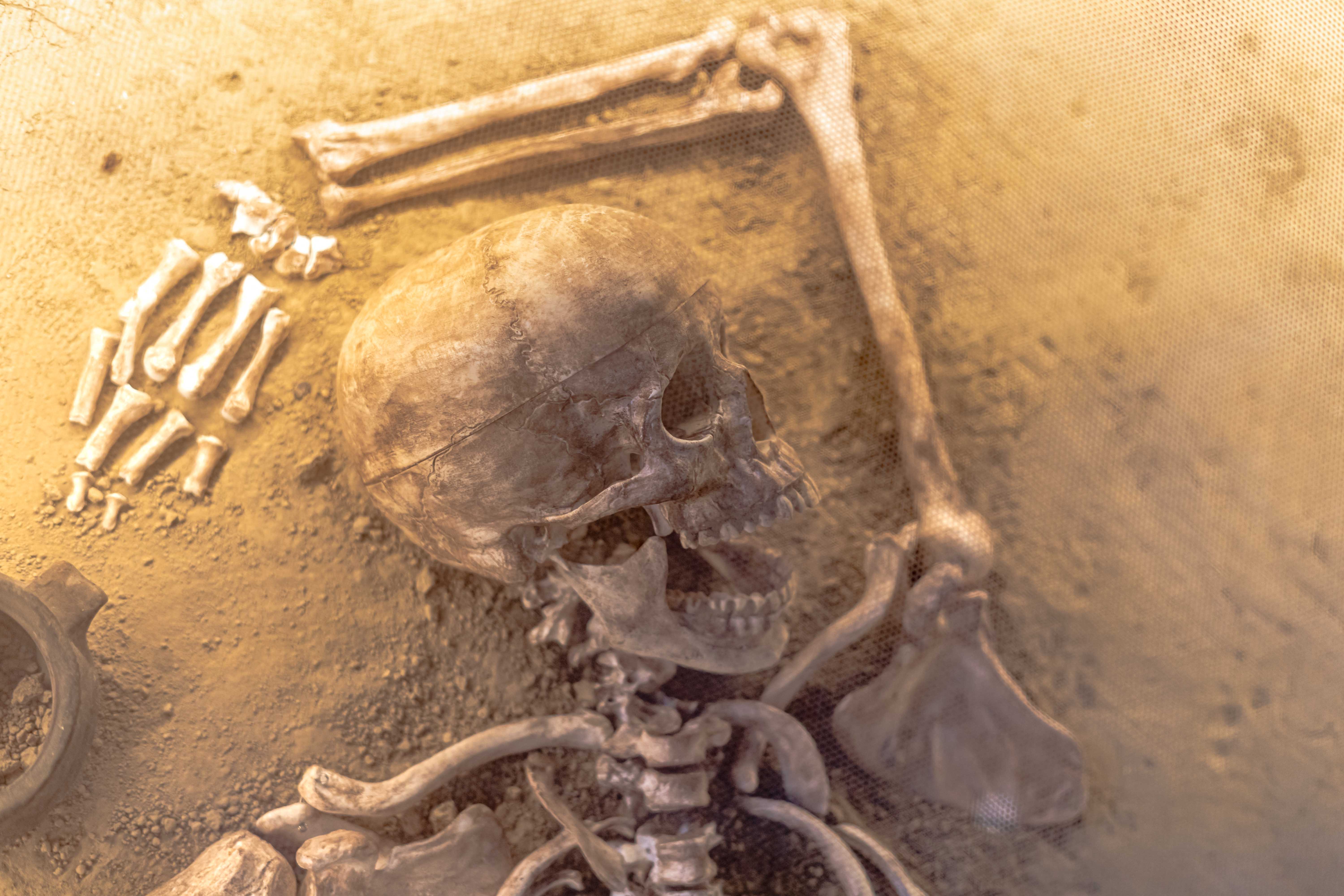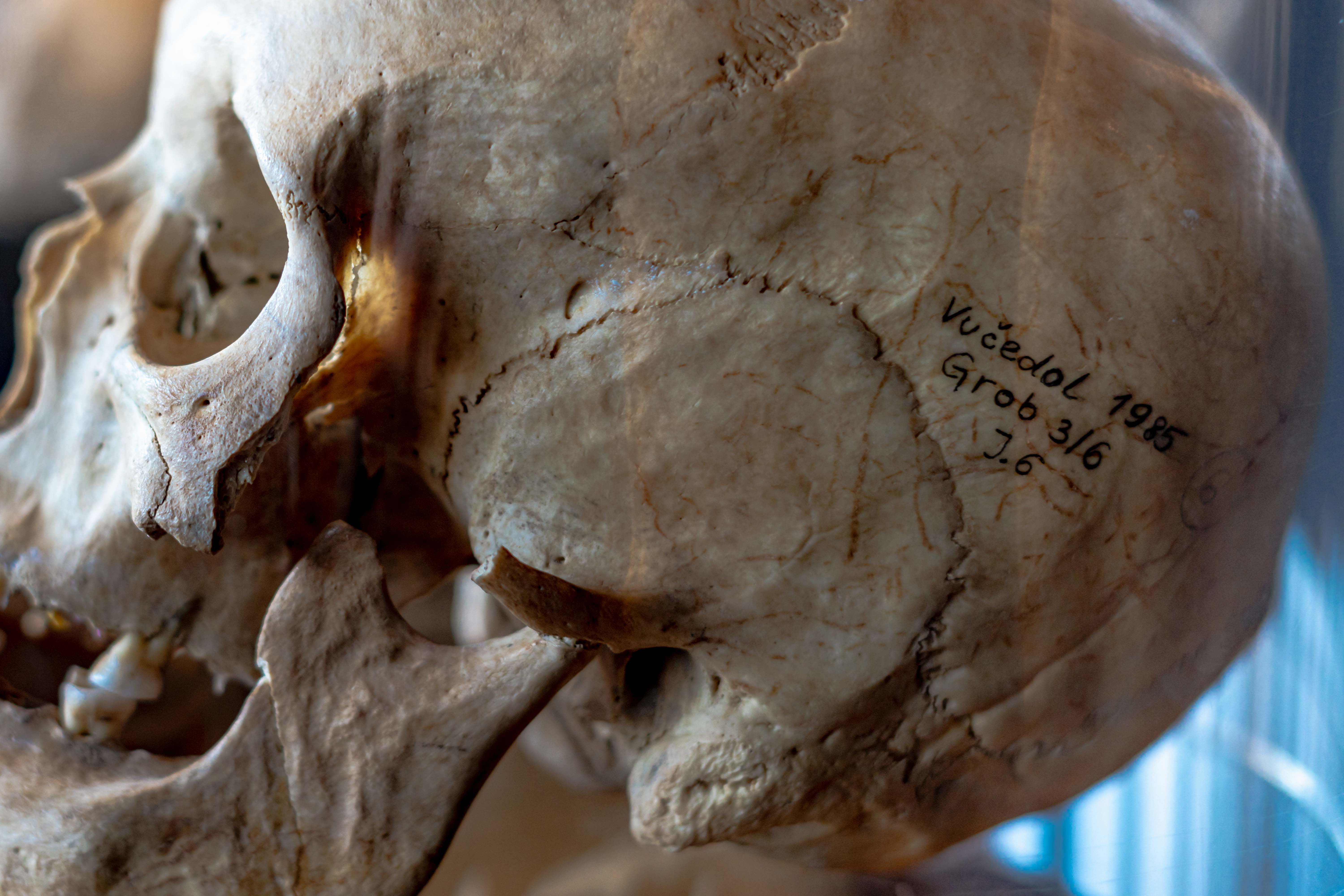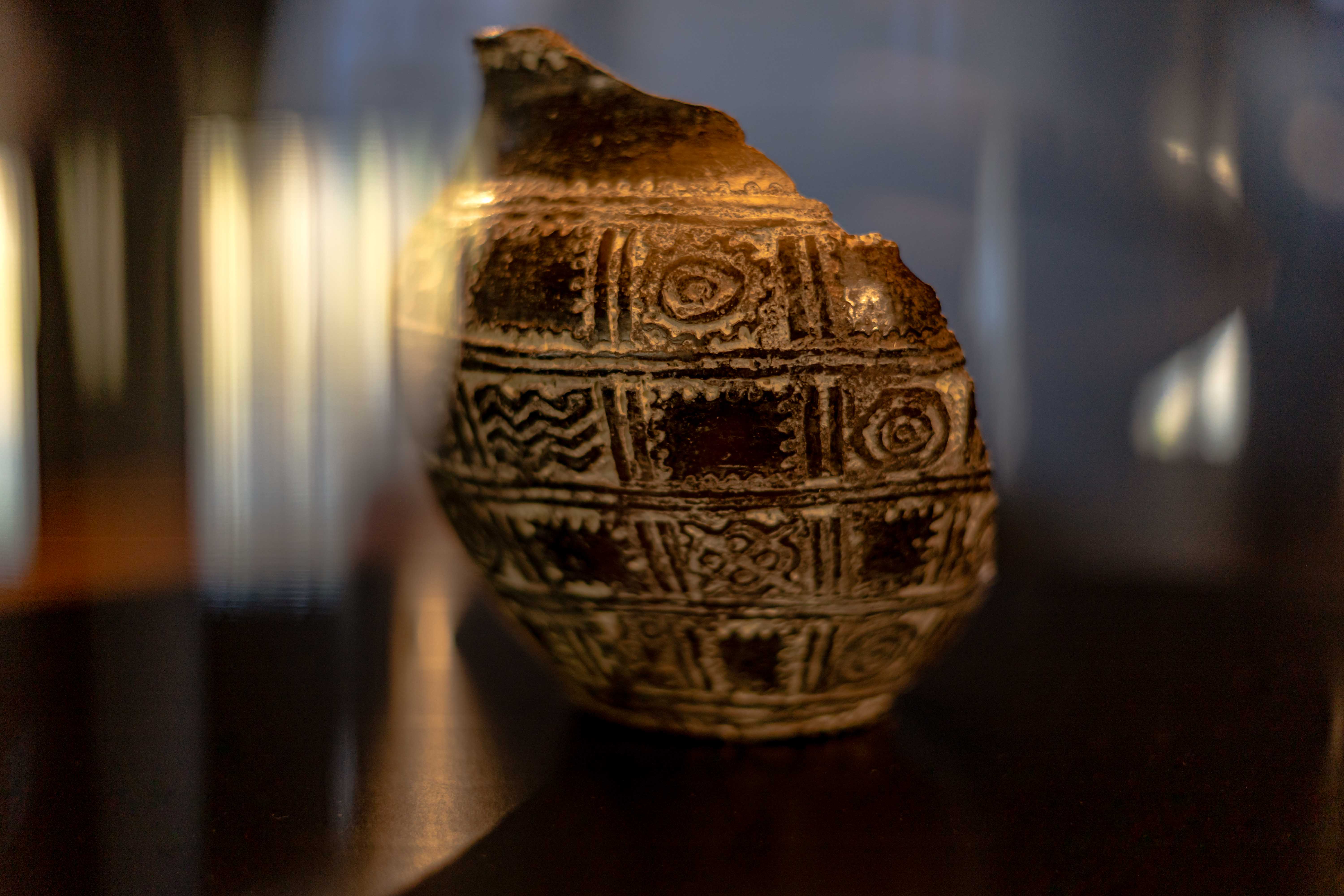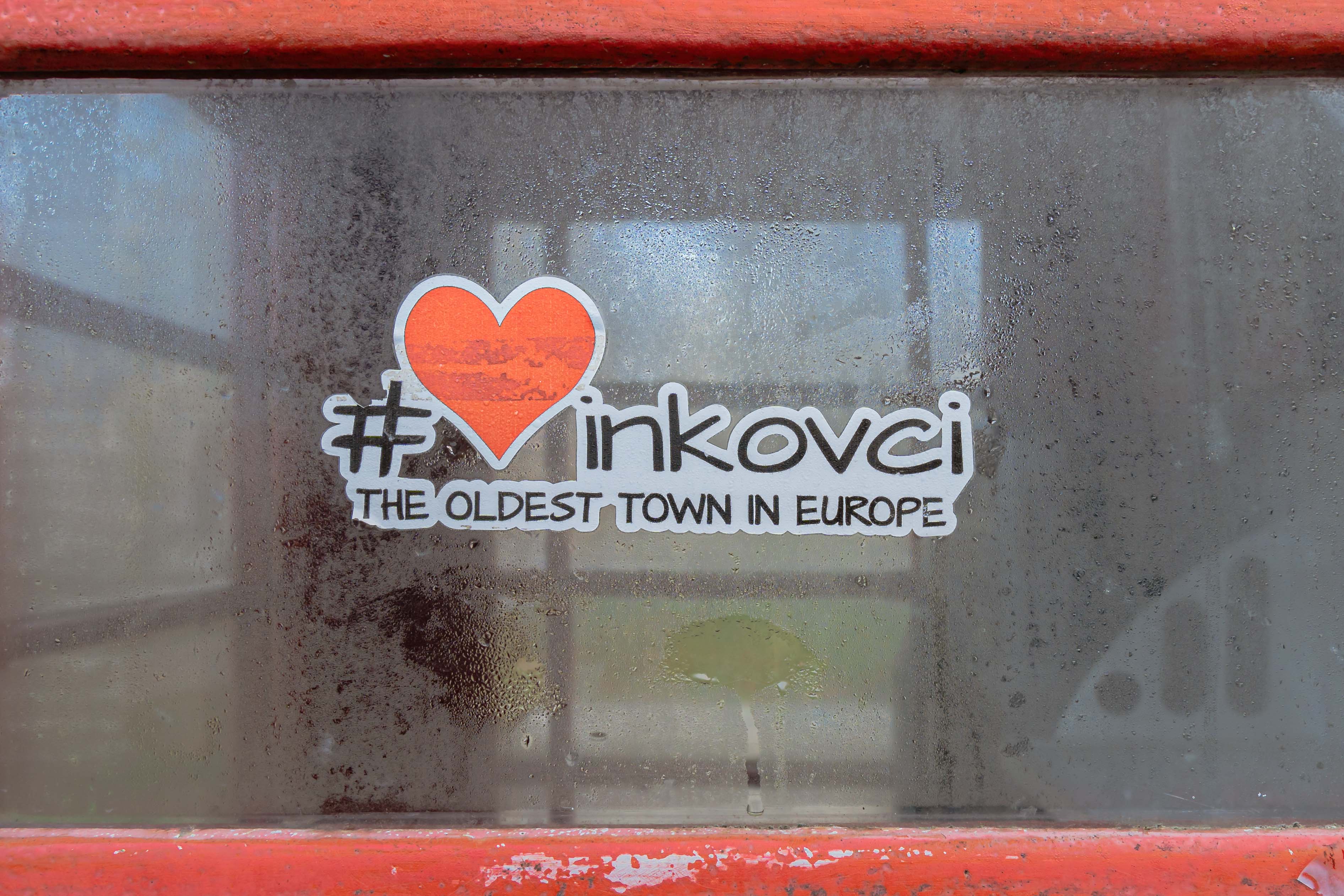Vucedol Culture Museum and the City: Free Entry for Vukovar Residents
December 32, 2022 - Though it has been visited by more than half a million visitors from Croatia and abroad since its opening in 2015, the Vucedol Culture Museum remains one of Europe's most underrated museums. The stunning architecture, unique location, the modern exhibition and exciting events deserve all the attention. A place with a soul like that, though, will no doubt go a long way.
As Glas Slavonije writes, the archaeological site of Vučedol is one of the most significant archaeological sites in Europe. For visitors of all generations who want to experience something new, beautiful, and interesting, the Vucedol Culture Museum offers a new universe of discovery and inspiration, with an incomparable and unrepeatable combination of location, architecture, pleasant atmosphere, and, above all, archaeological and historical values presented in a contemporary way.
It is not surprising that from the day it opened, the museum became an important place in the tourist offer of Vukovar, so many domestic and foreign tourists who visit the city on the Danube do not miss the opportunity to learn something about the locality itself and the history of the area. The museum employees help with their knowledge and presentation of the exhibition. Furthermore, they pointed out that a few changes await the citizens in the first days of 2023 and shared some good news for the residents of Vukovar.
"From 1st January, entry to the museum will be free for all Vukovar residents. It is enough to present an identity card as proof of residence. During the seven years since the museum's foundation, many fellow citizens have visited us, so we would like to thank them for supporting us. Also, the people of Vukovar visit the museum together with their guests and remain the best promoters of their city", pointed out the head of marketing Darko Bilandžić.
Since its opening on June 30, 2015, the museum has been visited by more than half a million visitors, making Vucedol one of the most visited museum institutions in Croatia.
During that period, it received several awards for its work and many activities in Croatia and abroad. Not so long ago, the first international scientific and professional conference on the meaning of Vučedol culture was also held in Vukovar.
For more, make sure to check out our dedicated Lifestyle section.
Vucedol Culture Museum Hosts First International Conference
December 9, 2022 - A two-day international scientific conference titled Vucedol/Culture: Origin and Heritage is currently underway at the Vucedol Culture Museum in Vukovar. The primary goal of this first scientific conference is to present the results of twenty years (2001–2021) of systematic research at the prehistoric site of Vucedol, but also to remind about the history of research and evaluation of earlier research of the site and the Vucedol culture.
"We are proud to host this first international scientific conference, where we discuss what Vucedol culture was in the wider area. This is also an opportunity to thank all previous researchers, university professors, and those who researched Vucedol culture in Slovenia, Hungary, Serbia, Bosnia and Herzegovina, and Montenegro. To all the areas that surround us, which gave birth to the most significant findings from the Vucedol culture. This is an opportunity to summarise previous research, but also to present the latest research in the past ten years on the location of the Streim corn field," - said the director of the Museum of Vučedol Culture, Mirela Hutinec, for HRV.
Danijela Roksandic Vukadin from the Department of Archeology of the Faculty of Philosophy of the University of Zagreb added that she would present a significant find, a tomb in which the remains of 30 people were discovered. "So far, only twenty graves have been found in the entire area, and we found thirty bodies in one tomb," pointed out Roksandic Vukadin, reminding that Vucedol has been investigated for almost 150 years.
Steve Tsentserensky
Pyramids were influenced by the Vucedol culture.
Because Vucedol culture represents one of the highest reaches of technological, social, and spiritual development of prehistoric communities on Croatian soil, the conference will cover a wide range of topics. It will include various issues related to the intensive development of metallurgy as a highly accumulative activity and its influence on shaping the material and spiritual aspect of the Vucedol communities, the high standard of ceramic production and pyro technology, the organisation and architectural design of the settlement, the complex element of religious life, problems of chronology and bioarchaeological and other topics.
"The Vucedol culture was the highest level of European civilisation 5,000 years ago. Research has proven that the culture of Vucedol is older than Egyptian, Mesopotamian, and Greek, that they had some knowledge and reach that was extended to other regions, and not the other way around as previously thought. For example, the three Egyptian pyramids were placed to correspond to the constellation of Orion's Belt, and in the Vucedol culture, Orion was mentioned 300 years before the construction of the pyramids. This proves what our Vucedol culture is; therefore, we must show the world what we have and where it all started, " stressed Professor Aleksandar Durman. He addressed young researchers, saying that only about 10% of the localities in Vucedol have been explored and that they should continue with excavations and research as well as developing cultural tourism to present Vucedol's culture to the world.
Steve Tsentserensky
The director of the Vukovar City Museum, Ruža Marić, recalled all the activities they carried out related to the creation of the Vučedol Culture Museum. "It was a dream of professor Durman, me, and professor's fellow archaeologists, which we managed to realise."
The head of the Conservation Department of the Ministry of Culture and Media in Vukovar, Zdenka Predrijevac, recalled that the ministry had invested significant funds in the construction of the Vučedol Culture Museum and archeological research.
"The program was implemented from 2005 to 2015 and was financed by the Development Bank of the Council of Europe and the Government of the Republic of Croatia in the amount of HRK 70 million, while the permanent exhibition of the Museum was financed with HRK 15 million. The construction of the archeological park Vučedol continues, with HRK 118 million secured for that project, and it should be completed within the next two years", said Predrijevac.
The conference was organised by the Department of Archeology of the Faculty of Philosophy of the University of Zagreb, the Vučedol Culture Museum, and the Vukovar Municipal Museum, with the support of the City of Vukovar.
"The city of Vukovar believes in the potential of the Vucedol culture and its influence on the development of Europe and the whole world. Therefore, we need to use this potential and put Vucedol on the tourist map of the world", said the deputy mayor of Vukovar, Filip Sušac, adding that proof of all this is the numerous recognitions that the Museum received, as well as this conference.
For more, make sure to check out our dedicated Lifestyle section.
Meet the Croatian Indiana Jones - Prof. Dr. Sc. Aleksandar Durman
October 20, 2022 – So there are places in Croatia where people have continuously lived for 8000 years. And there was a civilisation on the bank of the Danube 5000 years ago that knew the stars, seasons, and how much a standard door frame would measure today. Oh, and they drank beer. The fact that we know that and so much more we owe Professor Aleksandar Durman, the living legend of Croatian archaeology. We had the honour to meet the man himself and sit down with him for an hour of conversation, which included practical demonstrations of why the moon wasn’t a practical tool for the Vučedol people, a few trips down memory lane, and a discussion on the future of tourism in the Croatian east.

The man in action, Vučedol Culture Museum
Let us properly introduce the lively professor. He was born in 1949 in Zagreb, where he lived a happy childhood and studied archaeology and history. Asked about his interest in these areas, professor Durman says that archaeology came as a sort of plan B after he realised that he wasn’t that interested in physics which he initially planned to study. Archaeology seemed exciting and interesting, he adds, but since job prospects were scarce in the field, he decided to study history along with it. During his studies, though, he ensured that he was employed in archaeology and never looked back. When he was a student in the seventies, almost all the research was concentrated on the Croatian coast and the remnants of the Roman era that kept popping up there. Fair enough, he comments, but there was and is much more to discover in other parts of Croatia, primarily the east.
Steve Tsentserensky
And he went on to do just that. In his consolidated CV, there is a page just about his research projects in Vukovar and Vinkovci, where he started working in 1977 and kept coming back until his recent retirement. He received multiple awards for his contribution, including the Vinkovci Gold Plaque (2011), the Lifetime Achievement Award of the Croatian Archaeological Society (2013), and the title of an Honorary Citizen of Vukovar (2020).
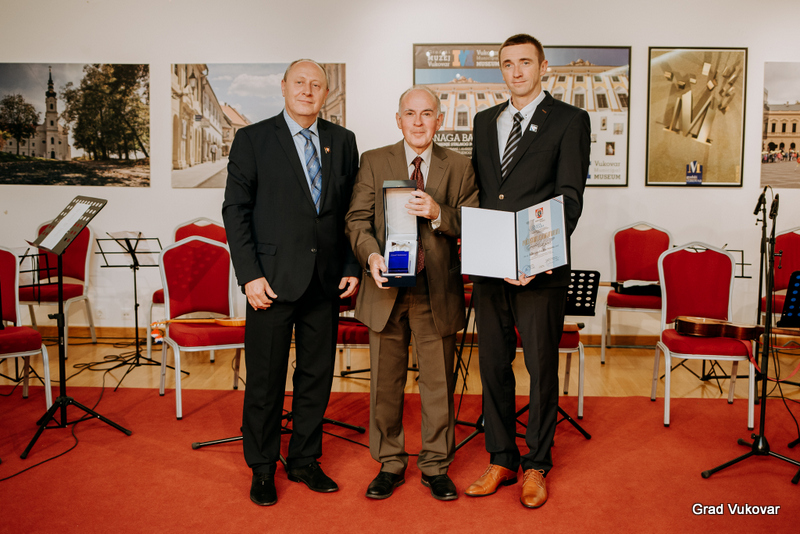
City of Vukovar
If you've heard anything about the Vučedol culture and the museum, it was probably about the famous bird. This ceramic dish was discovered there in 1938 and became a symbol of Vučedol and Vukovar. We mean, of course, the Vučedol dove that was later reclassified as the Vučedol partridge. Professor Durman changed its “name,” providing an excellent explanation. Without revealing it, we’ll say that it has to do with social hierarchy, the nature of the job, and what partridges do when they sense danger. You can see the original in The Archaeological Museum in Zagreb, but the Vučedol museum in Vukovar will provide all the context and insight to help you understand why an ancient civilisation, the contemporaries of Egypt and Mesopotamia decided to settle just there. At the risk of repeating ourselves, if you head east, make sure to visit this stunning location.

Back to our main character. An article about the professor wouldn't be complete unless we mentioned, possibly, his most significant discovery. That would be the Orion calendar which he discovered on the 21st of March in 1978. Fate, he says, having found it on the first day of spring. The little ceramic dish in question, according to professor Durman's interpretation, is one of the most significant witnesses of just how advanced the Vučedol civilisation was. The carved pattern on the dish apparently represents the night sky, with the four horizontal fields most likely dividing it into the four seasons.
The Orion calendar, Steve Tsentserensky
The incrustations inside the fields represent the constellations visible in the area in 2600 BC. The most important one, you might have guessed, was the Orion. It was the dominant winter constellation, and it was reliable – when the three stars of Orion's belt would fall below the horizon, the Vučedol people knew spring was there. And since they largely relied on their crops for sustenance, the first day of spring also signified the start of a new year and new life. The stars played a significant role in the daily lives of the Vučedolians as well as their spirituality. The Orion dish was found in a locality near Vinkovci and has become the symbol of that city.

Orion calendar mozaic in Vinkovci city centre, Steve Tsentserensky
Speaking of, it is Vinkovci that takes another special place in our article and the books of Croatian archaeological research. You might have heard something about it being the oldest city in Europe, but that, we dare say, is an understatement. Professor Durman found evidence supporting the thesis that the area of Vinkovci has continuously been inhabited for over 8000 years. Fun fact, not one but two Roman emperors were born in Vinkovci – Valentinian and Valens, whose name is now synonymous with some excellent craft beer.
Steve Tsentserensky
To put all of this in context, let us quote the professor himself when asked how we should present his findings and demonstrate the importance of these areas to both those who live here and those who visit. “The Vučedol culture was the highest level of Indo-Europeans at the very beginning. They had a calendar; they knew metallurgy, and even the measurements for door frames that we still use today came from there. They had a pictorial writing system before the hieroglyphics. Just consider that all we know about Greek mythology had its roots in the Vučedol culture”. Now tell us that is not fascinating.
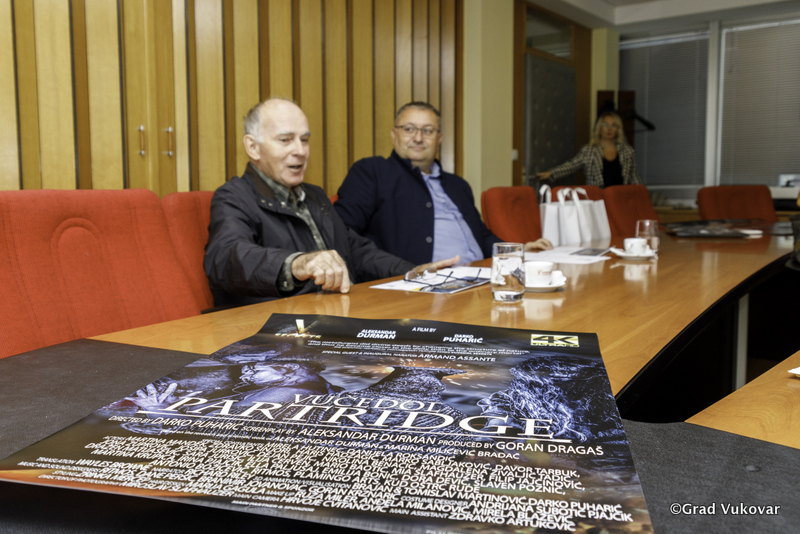
City of Vukovar
Finally, let us thank professor Durman for a unique, educational evening and his contribution to archaeology in Croatia, but especially in the east of the country. He has worked tirelessly to find, study and explain so much of what we know about the area today, and he has also travelled the world promoting it and emphasizing its importance. Among other things, he was a screenwriter for the Vučedol Secrets film, with its third part coming out soon. Naturally, we also asked him about the future of tourism in Slavonia, and we were happy to hear that he shared our view – the area is still a hidden gem, but its time will come. Archaeology and archaeological tourism will play a key role.
For more, make sure to check out our dedicated Lifestyle section.
Vučedol Culture Museum Invites You to Out of the Box Virtual Exhibition
August 5, 2022 – The Vučedol Culture Museum in Vukovar remains a truly special place. Its unique location, architecture, and the dedication of those who make things happen there day after day, all keep drawing you back and leave you longing for more. This time, the invitation is out for all who like anything digital, 3D, and in general thinking out of the box. A new interactive exhibition nicknamed Vučedolac izvan okvira (The Vučedol Man Outside His Box) is open until the end of August.
Tportal followed up with the author of the exhibition, Darko Bilandžić, who is also the head of marketing at the Vučedol Culture Museum. He points out that, thanks to their approach to marketing and the possibilities of the digital world, he decided to offer the museum’s visitors a digital insight into the life of the prehistoric people of Vučedol.

Photo: Vučedol Culture Museum
“The people of Vučedol were advanced as a culture and in many ways ahead of many at that time. We could say that they thought outside the box. I believe that we have passed the time of static museums, which require visitors to walk through them and read the materials next to the exhibits. In addition to improving our website, we decided to go a step further and create an interactive exhibition using augmented reality technology”, says Bilandžić.
He explains that ten tablets are available to visitors, which they can use to scan ten posters to find the corresponding 3D, audio, text, or video content.
“With this type of presentation, we want to get even closer to the younger generation and keep up with the modern ways of presenting museum material, and thus further build our digital archive. I must admit that the feedback of our visitors pleasantly surprised me, as it clearly shows how important it is to continue working in the direction of new technologies”, says Darko Bilandžić.
He adds that even as a child he was interested in advanced technologies and that robots were his favourite toys.
“That passion for new and advanced technologies always stayed with me. Back in 2016, at the Vučedol Culture Museum, we had visitors take a virtual walk through the museum with the help of VR glasses”, he recalls.
He added that the “trigger” for greater involvement in the digital presentation of cultural material was the coronavirus pandemic when many museums were closed.
“It made apparent that a lot of museums were not ready for online work. We saw our chance there and I dove into learning and education, and this exhibition is the first result of that”, he says proudly, adding that without digital technologies in the future it will be difficult to imagine the operation of any museum.
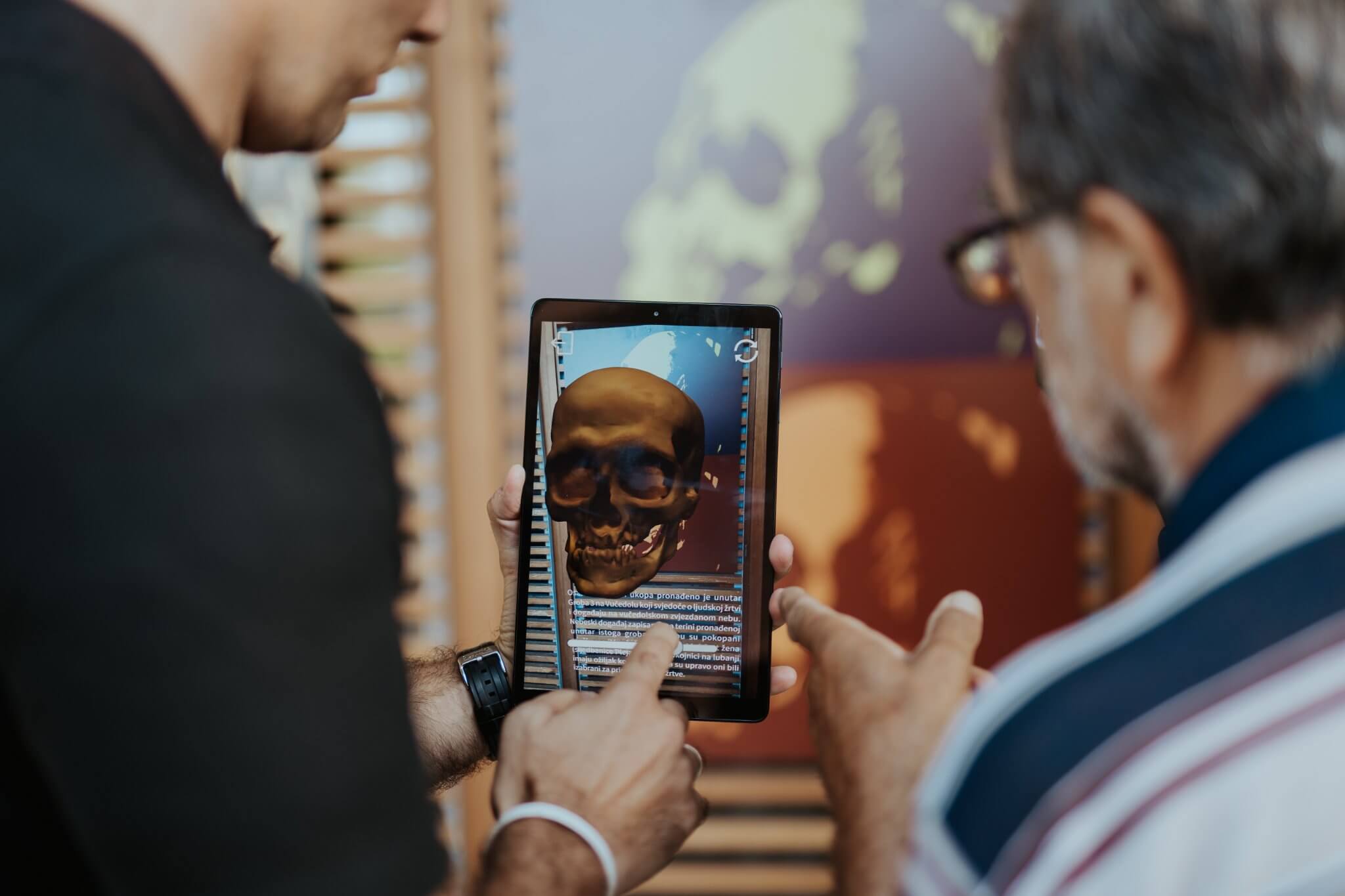
Photo: Vučedol Culture Museum
This marketing expert believes that augmented reality offers museums unimagined opportunities for development and getting closer to citizens of all ages.
“We especially want to get closer to young people and get them interested in everything that the Vučedol Culture Museum offers, and it offers many things that define today's life and reality”, concludes Darko Bilandžić.
Darko is a marketing expert who has a passion for a reality that is virtual, augmented, or extended. If you would like to know more about that, make sure to check out TCN’s interview with Darko on Culex, a successful VR company that he co-owns.
For more on lifestyle in Croatia, check out our dedicated lifestyle section.
Ever Heard of the Bronze Age Diet? Vučedol Archeological Remains Revisited
January 29, 2022 - The Paleo or Stone Age diet is amongst the most popular lifestyle trends in the 21st century, claiming a variety of health benefits including weight loss and improved mental health.
But what about our ancestors after the stone age? What were their lifestyles like over the next 3,000 years?
A Croatian ancestral burial site may hold some answers.
A recent study on remains excavated from the Vučedol archeological site located in eastern Croatia was able to determine the long-term dietary choices, and the type of food that inhabitants consumed during the Bronze Ages.
Results point to the possibility that they consumed more animal proteins and fewer greens than our Paleolithic ancestors.
Where is Vučedol and what is the significance of this site?
Vučedol is an important archeological site located in the southwestern Carpathian Basin.
In terms of modern boundaries, the vast Basin spans across the territories of Hungary, Slovakia, Poland, Ukraine, Serbia, Croatia, Slovenia, and Austria.

Outline of the Carpathian Basin with Modern Boundaries. Image: Google Earth
The Vučedol archeological site is located in the eastern region of Slavonia, along the Danube River, and is approximately 5 kilometers downstream from Vukovar.
While only 10% of the Vučedol site has been excavated today, rich findings from the area have improved our understanding of the late Stone, Copper, and Bronze Ages within the Carpathian Basin.

Location of Vukovar, Croatia. Image: Google Maps
For more in-depth reports of Vučedol heritage and archeological findings, take a look at TCN’s coverage here and here.
New insights
The remains at Vučedol were originally unearthed in 1897, where a total of 15 skeletons were found. However, due to technological and financial constraints, bioarchaeological data on these remains have been relatively scarce.
Fortunately, with access to modern scientific methods (i.e. stable isotope analysis) researchers have been able to revisit and conduct a series of tests on human remains excavated at Vučedol in the late 19th century.
Researchers suggest the graves dated back to the Early Bronze Age (3300-1200 BCE), but individuals were buried over a time period spanning several decades.
By examining the dental and skulls of the remains, the sex and age distributions of these remains stood out. The group was evenly represented by four male and four female skeletons. All individuals were able to reach adulthood.
Of these, 6 were considered ‘middle/older’ aged 35 years and older, while the other two were categorized as ‘young/sub adults’ (18-35 years).
Other archeological digs have unearthed remains from the same time period, but usually consisted of children or young/sub-adults. Although 5 of these individuals suffered from poor health during childhood, they were well enough to reach adulthood.
Some of the ailments they suffered were attributed to the lack of vitamins B12, and anemia brought on by iron deficiency and harsh living conditions.
During the Early Bronze Age, inhabitants experienced extensive socio-economic change. They lived through a period of great prosperity around 2500 BCE, lasting almost 150 years. Unfortunately, their fortunes reversed quite rapidly with a decline that lasted another 100 years.
Stone age vs. Bronze age diets
Researchers were also able to outline clear differences in diets between the Late Stone Age and the Early Bronze Age based on comparisons of stable isotope values from the remains.
It showed the reliance of inhabitants on different ratios of crops and animal proteins which evolved depending on the climate and social-economic conditions.
Generally, inhabitants of the Late Stone Age adopted similar agricultural practices. In line with the growing conditions of the area at the time, their diets were mostly made up of fibrous crops such as rice, wheat, barley, oats, beets, and potatoes as opposed to corn, sugarcane, or millet.
At the turn of the Early Bronze Age, it appears the region’s inhabitants began to incorporate more meat in their diet with a decrease in plant carbons in their remains compared to their Stone Age counterparts.
Researchers theorized inhabitants of the Early Bronze Age were able to regulate the farming of livestock, which provided them with a dependable source of protein.
Alternatively, the increase in protein consumption could also be due to the lack of abundant plant vegetation. Climate conditions during the time were seemingly not as hospitable to agricultural farming as those living during the Stone Age
They also supplemented their diet by hunting wild game such as deer and boar from the nearby forests. Occasionally, they caught fish from the Danube River, albeit to a much lesser extent than the consumption of animal proteins.
Wild Boar. Image: Francesco Ungaro/Pexels
While stable isotope analysis provides powerful insights into the types of food our ancestors consumed, for example, that they were likely eating more rice and potatoes than corn, it has limited application in identifying exact types of produce as well as serving sizes.
History of the Vučedol site
This site was inhabited for three millennia, from the Neolithic to the Bronze Ages (4000-1500 BCE), providing invaluable insights into the lives of people and the social and economic changes during this period.
Towards the end of the Copper Age, lived the Vučedol culture (3080-2340 BCE). The first recorded finds arrived at the Archeological Museum of Zagreb as early as 1894 through Josip Brunšmid, museum director.
This collection continued to grow due to the support of the Streim family who owned the land.

Vučedol, along the Danube River. Image: Google Earth
In one of the most famous finds surrounding the Vučedol site, ceramics were unearthed in 1938 by German archeologist RR Schmidt. The Vučedol culture was well known for the production of ceramics that required highly refined pottery skills.
These vessels are currently on display at the archeological museum in Zagreb.
For more, check out our dedicated lifestyle section.
Vučedol Culture Museum Launches Virtual E-Learning Platform
December 9, 2020 - The Vučedol Culture Museum has adapted to the current COVID-19 situation and launched an e-learning platform so visitors can enjoy a virtual experience of the museum.
HRTurizam writes that although the museums are still open, of course with the observance of all epidemiological measures, due to the epidemiological situation they are poorly visited, especially since all tourist activity is currently on hold.
Faced with new challenges, and following the digital trends, the Vučedol Culture Museum has prepared two novelties in order to make it easier for all visitors to have a virtual experience of the museum. Thus, they made a 360-degree interactive tour of the Vučedol Culture Museum, and now they are among the first, if not the first museums in Croatia, to create a virtual e-learning platform, i.e., an interactive quiz.
"As COVID-19 significantly influenced visits to museums, we decided to adapt to the times and still follow modern trends in technology," says Darko Bilandžić, marketing manager of the Vučedol Culture Museum and creator of the virtual walks and quizzes, adding that the idea to take it a step further than a virtual tour and an educational quiz.
"This quiz falls under the new buzz word 'e-learning' in which visitors will see through 26 questions how much they know about Vučedol culture. Through interactive content, we are sure that we will provide the user with an educational and interesting experience and increase knowledge about Vučedol culture," adds Bilandžić.
The interactive quiz goes through 13 rooms and exhibits within the museum and contains a total of 26 questions in which everyone can test their knowledge of Vučedol and learn new knowledge about Vučedol culture. After the correct answer, a brief explanation of the correct answer is displayed.
"I am sure that others will soon recognize the importance of e-learning as a modern tool," concluded Bilandžić.
This is just one small example of the digitalization of tourism, and the whole platform is just opening the door for an upgrade that is virtually limitless. It is a digital platform or medium that can be expanded in various ways, and is just a matter of creativity and, of course, budget.
You can learn more about the interactive quiz of the Museum of Vučedol Culture HERE
To read more about lifestyle in Croatia, follow TCN's dedicated page.
Vučedol Culture Museum Welcomes 200,000 Visitors Since Opening
ZAGREB, November 12, 2018 - After the Vučedol Culture Museum recently received this year's Innovation of the Year Award at Croatian Tourism Days, Vukovar Mayor Ivan Penava has congratulated the museum's staff on that achievement, adding that in the past three and a half years, more than 200,000 visitors have visited the museum which has contributed greatly to the town's development.
The Croatian National Tourist Board awarded the museum for its educational projects designed for the youngest readers who can be informed, through a picture book and guide, of the Vučedol prehistoric culture and of the museum's holdings.
"We are proud of this award and grateful to the Vukovar Tourist Board for nominating us and the panel of judges who recognised the museum for its innovation," museum director Mirela Hutinec has said.
She recalled the museum's latest 100 million kuna project, the Vučedol Archaeological Park, which is being implemented by the museum together with the Culture Ministry, the Town of Vukovar, its Tourist Board and Vukovar Port.
The project is expected to be completed by June 2022 and involves rebuilding the Vučedol settlement and its copper foundry, building a research centre, a farm, a planetarium, an educational pathway and hospitality facilities.
The Vučedol Culture Museum was opened in June 2015 as part of the government's Vukovar-Vučedol-Ilok project, implemented jointly with the Culture Ministry and Council of Europe Development Bank.
For more articles on Croatian museums, click here.
Vukovar-Vučedol-Ilok Cultural Destination Wins Prestigious Award
ZAGREB, March 23, 2018 - "Vukovar-Vučedol-Ilok" is one of 18 European destinations which have received the EDEN prize confirming the excellence of these destinations for cultural tourism, the Croatian National Tourism Board (HTZ) reported on Friday.
City of Vukovar First in Croatia to Introduce a Digital Travel Guide by Beacon Technology
Head of the Department of Culture and Tourism Marina Sekulić, project manager for the company Oroundo Darko Bilandžić, and director of the Tourist Board of Vukovar Jasna Babić presented the mobile application Oroundo at the City Hall in Vukovar.


